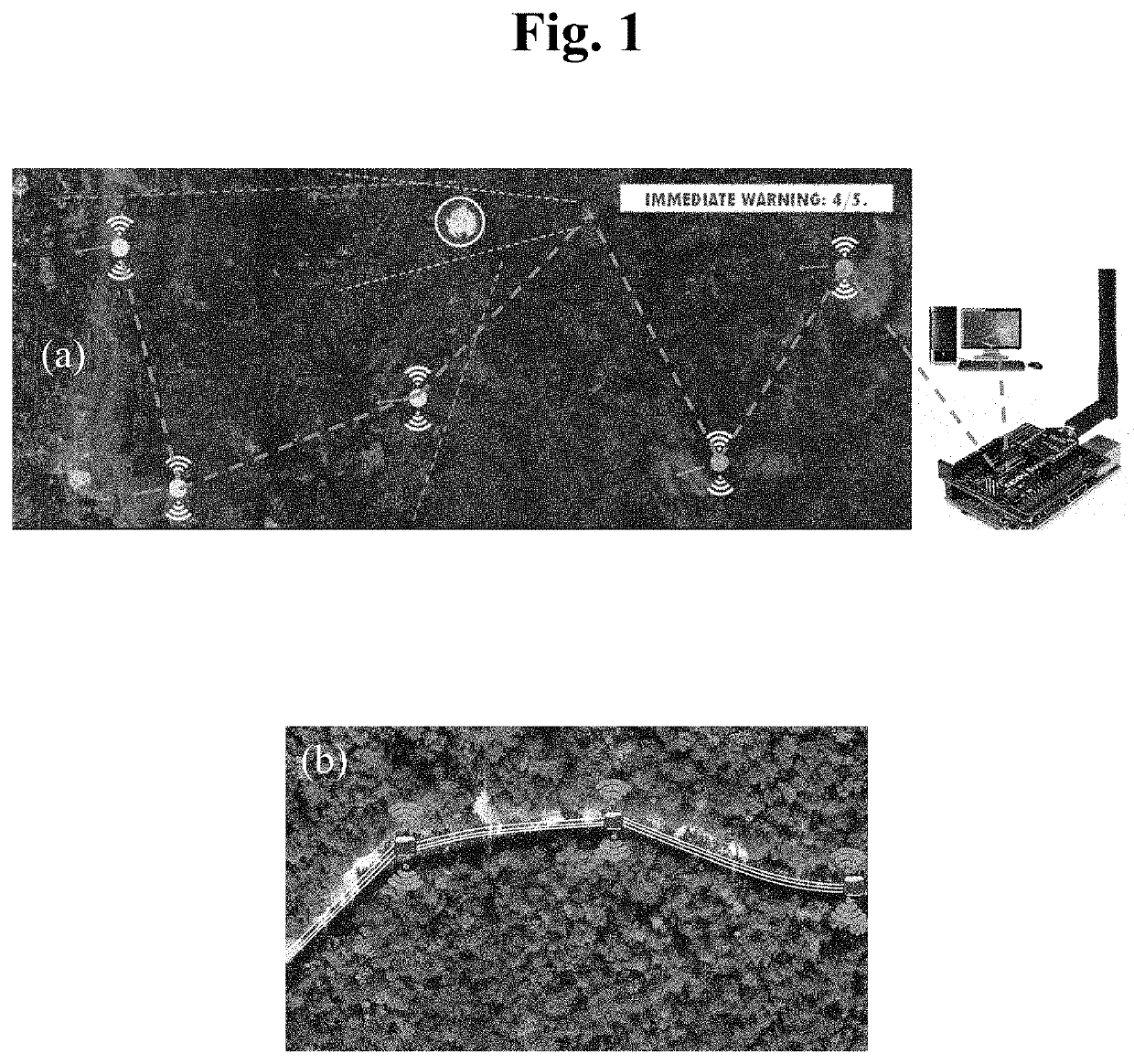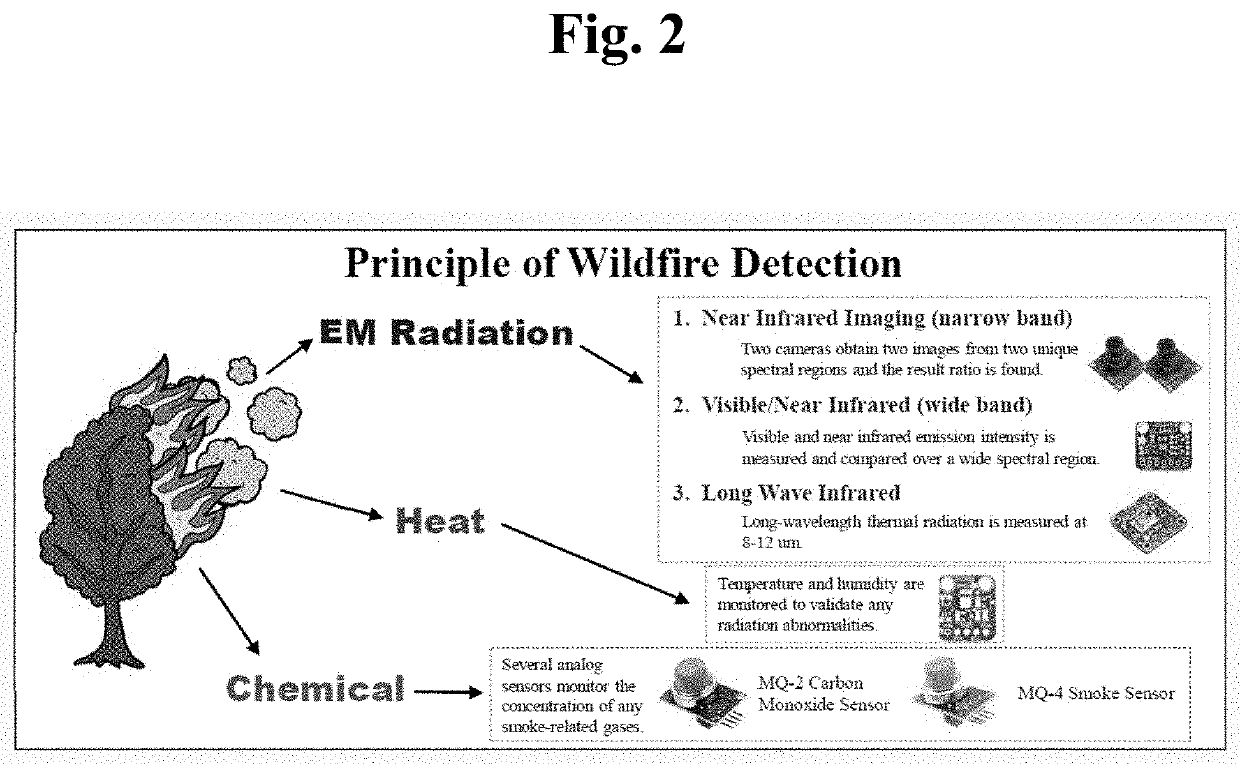Early-Warning Fire Detection System Based on a Multivariable Approach
- Summary
- Abstract
- Description
- Claims
- Application Information
AI Technical Summary
Benefits of technology
Problems solved by technology
Method used
Image
Examples
Embodiment Construction
[0018]Referring now to the invention in more detail, the system consists of two separate parts: a distributed network of data acquisition devices each monitoring the surrounding area (FIG. 1) and data processing algorithms. Each sensing unit can detect fires based on several methods of verification (FIGS. 2 & 3). Based on the readings of the sensor network, a reconstruction algorithm implemented in the control center can calculate the location of the fire even if the direct flames are not in the line of sight for any imaging sensor yet.
[0019]Referring now to the data acquisition device in more detail, each device may be solar powered and wirelessly connected to other data acquisition devices and / or directly to the central workstation (FIG. 1). Each device has a subset of components, consisting of a solar panel, a LoRa Wide Area Network communication device (or another long range wireless connection), a rechargeable battery, one or more smoke sensors, a temperature sensor, humidity s...
PUM
 Login to View More
Login to View More Abstract
Description
Claims
Application Information
 Login to View More
Login to View More - R&D
- Intellectual Property
- Life Sciences
- Materials
- Tech Scout
- Unparalleled Data Quality
- Higher Quality Content
- 60% Fewer Hallucinations
Browse by: Latest US Patents, China's latest patents, Technical Efficacy Thesaurus, Application Domain, Technology Topic, Popular Technical Reports.
© 2025 PatSnap. All rights reserved.Legal|Privacy policy|Modern Slavery Act Transparency Statement|Sitemap|About US| Contact US: help@patsnap.com



